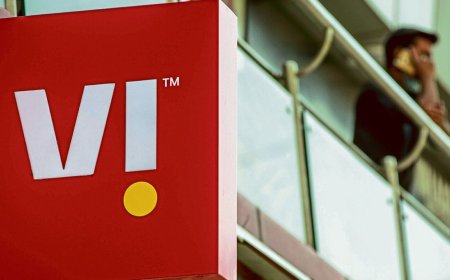India Gold Prices Turn Premium After 5 Months as Festive Buying and Lower Rates Spur Demand
Indian gold prices flipped to premium for the first time in five months amid robust festive demand and global price corrections. Read full analysis on market trends and Asia’s gold trade dynamics.

Asia Gold: India Swings Back to Premium After 5-Month Lull on Festive Demand, Price Dip
India’s gold market has returned to a premium for the first time in five months, fueled by a timely combination of festive demand and a global pullback in bullion prices. As the auspicious occasion of Akshaya Tritiya approaches — one of the most significant gold-buying festivals in India — buyers are stepping back into the market in force. Dealers across the country are now charging premiums of up to $2 per ounce over official domestic prices, reversing a long period of discounts.
This marks a significant shift in India's gold trade dynamics and offers a glimpse into broader regional trends across Asia's bullion markets.
A Turnaround in Premiums: The Data Behind the Shift
According to leading bullion dealers, Indian gold traders were offering discounts of $3–$5 per ounce just weeks ago. This trend, which persisted for over five months, was largely driven by tepid demand, high domestic prices, and import duty concerns. However, the market has decisively turned.
“We’ve finally seen a rebound. With Akshaya Tritiya and lower gold prices globally, physical buying has returned in a big way,” said Rajiv Mehra, President of the Indian Bullion and Jewellers Association (IBJA).
India’s imported gold price is benchmarked off international rates, adjusted for currency and tariffs. With global prices slipping and the rupee holding steady, local jewelers now find room to charge a premium, reflecting actual buyer interest.
Gold Prices Ease Globally, Stimulating Asian Demand
Gold has corrected from record highs in April 2025. International spot gold dipped to $2,284 per ounce, down nearly 4% from its peak of $2,380 per ounce. This pullback — largely triggered by a stabilizing U.S. dollar and shifting expectations on U.S. interest rate cuts — has reignited retail interest in Asian markets.
Global Gold Price Overview (As of May 2, 2025):
| Region | Price (USD/oz) | Change from Peak |
|---|---|---|
| Spot Gold | $2,284 | ▼ 4.03% |
| MCX (India) | ₹68,900/10 gm | ▼ ₹2,000 |
| COMEX Futures | $2,290 | ▼ 3.8% |
India’s domestic price fell in tandem, offering an opportunity for consumers to re-enter the market — especially those who had postponed purchases due to high volatility.
Festive Boost: Akshaya Tritiya, the Catalyst for Demand Revival
The Indian gold market thrives on tradition. Festivals like Akshaya Tritiya — celebrated on May 10 this year — are considered auspicious for gold purchases, especially among Hindu and Jain communities.
“Demand has surged in both urban and rural centers. Footfall in stores has doubled compared to last month,” said Ramesh Kalyanaraman, Executive Director at Kalyan Jewellers.
Akshaya Tritiya accounts for nearly 15–20% of India's annual retail gold sales, making it a crucial period for jewelers. Lower prices ahead of the festival have only added fuel to this seasonal buying momentum.
Supply Dynamics: Imports Rise, Inventories Get Replenished
India, the world’s second-largest gold consumer, relies heavily on imports to meet domestic demand. According to customs data, gold imports in April 2025 surged nearly 30% month-on-month, reflecting a strategic stocking-up by jewelers ahead of the festive and wedding season.
This influx of gold has also narrowed supply gaps seen in the first quarter, when restrictions and weak demand curbed inflows.
Regional Snapshot: Asia's Gold Trade Shows Mixed Trends
While India swung into premium territory, gold demand patterns across Asia are showing nuanced divergence:
🇨🇳 China:
The world's largest gold consumer is still operating at par with global prices. Despite strong demand, dealers refrained from charging premiums due to concerns over economic growth and consumer caution post-Lunar New Year.
🇹🇭 Thailand:
Saw moderate demand pick-up, but premiums stayed flat as tourists returned and local economic sentiment improved.
🇻🇳 Vietnam:
Premiums remained steady at around $2–$4/oz, with the State Bank of Vietnam continuing to regulate gold sales tightly.
🇸🇬 Singapore & 🇭🇰 Hong Kong:
Markets remained competitive with minimal premiums, primarily serving as gold trading hubs for institutional and private banking clients.
Price Drop Sparks Smuggling Concerns
India's return to premium status also brings with it a familiar concern: a possible uptick in gold smuggling. Premiums signal profit opportunities for illicit imports, especially when import duty and GST (Goods & Services Tax) create price arbitrage between official and grey markets.
“We’re monitoring closely. Higher premiums often attract smuggling networks, especially through porous borders,” a senior customs official told us on condition of anonymity.
India currently levies a 15% total import tax on gold, including a 12.5% basic customs duty and a 2.5% agriculture infrastructure cess — making unofficial routes attractive during high-demand periods.
Investment Trends: ETFs and Digital Gold See Uptick
Beyond physical gold, investment in gold exchange-traded funds (ETFs) and digital gold platforms is also on the rise. Retail investors are using price dips to accumulate gold digitally or via SIPs.
Gold ETF AUM in India:
-
April 2025: ₹24,382 crore (up 6.8% YoY)
-
Monthly Inflows: ₹355 crore
-
Leading Players: Nippon India, SBI, HDFC, Kotak
This trend suggests a maturing gold investment culture, where consumers don’t just buy jewelry but also treat gold as a long-term financial asset.
Outlook: What Lies Ahead for Gold in India and Asia
As Akshaya Tritiya kicks off a vibrant gold-buying season, traders expect this positive momentum to extend into the wedding season in May–June. The outlook remains bullish for retail sales, with global uncertainty — including geopolitical tensions and central bank buying — continuing to support gold’s status as a safe-haven asset.
However, any sharp rebound in international prices could again dampen demand and swing premiums back into discount territory.
India's Gold Market Finds Its Shine Again
After months of subdued demand, high prices, and lingering uncertainty, India’s gold market has found its footing. A combination of seasonal enthusiasm, falling prices, and favorable currency dynamics has rekindled interest in the yellow metal, swinging prices back into premium territory.
For India and much of Asia, gold remains more than just an asset — it’s a symbol of prosperity, security, and cultural identity. As 2025 unfolds, the return to premium status might just mark the beginning of a broader rebound in Asia’s love affair with gold.
FAQs – India Gold Premium & Market Trends
Q1. Why are Indian gold prices at a premium now?
Due to increased festive demand and falling international gold prices.
Q2. What is the premium currently charged in India?
Up to $2 per ounce over the official domestic rate.
Q3. When is Akshaya Tritiya 2025, and why is it important?
It falls on May 10. It's considered highly auspicious for buying gold in India.
Q4. Are other Asian countries showing similar demand?
Mixed trends — India leads, China and others remain cautious.
Q5. What are the risks associated with premiums?
Higher premiums can trigger smuggling and distort the official import market.
What's Your Reaction?
 Like
0
Like
0
 Dislike
0
Dislike
0
 Love
0
Love
0
 Funny
0
Funny
0
 Angry
0
Angry
0
 Sad
0
Sad
0
 Wow
0
Wow
0












































































